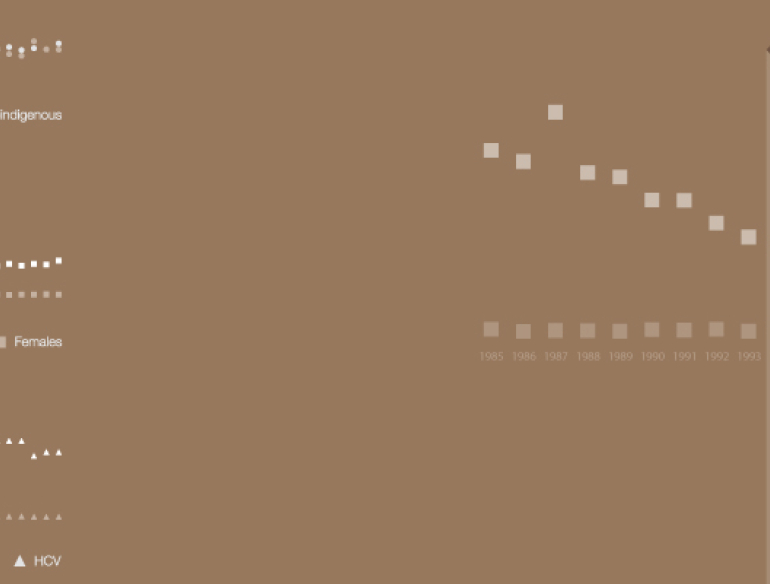Key findings
- By 31 December 2011, 31,645 cases of HIV infection had been diagnosed in Australia.
- The per capita rate of diagnosis of hepatitis B infection in Australia in 2007 – 2011 was stable at around 32 per 100,000 population. The rate of diagnosis of newly acquired hepatitis B infection declined in Australia from 1.4 to 0.8 per 100,000 population between 2007 and 2011.
- The per capita rate of diagnosis of hepatitis C infection has declined from 57.5 per 100,000 in 2007 to 45.7 per 100,000 population in 2011.
- Chlamydia was the most frequently reported notifiable condition in Australia in 2011 with 80,800 diagnoses. The population rate of diagnosis of chlamydia in 2011 was 345 per 100,000 population, a 7% increase over the rate in 2010, continuing the increase seen over the past ten years.
- The rate of diagnosis of gonorrhoea increased by 45%, from 36.2 per 100,000 population in 2007 to 52.5 in 2010. The rate of diagnosis of infectious syphilis declined from 6.8 in 2007 to 5.0 in 2010 and increased to 5.7 in 2011. Increased rates of infectious syphilis in 2011 occurred in Queensland, South Australia, Victoria and Western Australia.
